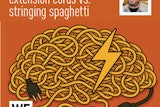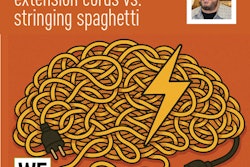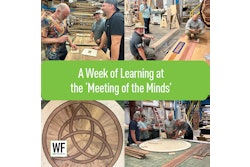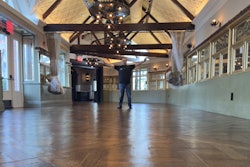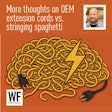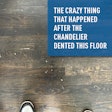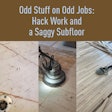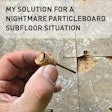I'm going to start by answering the question Wayne Lee asked in his latest blog post: Wayne, the short answer on this job is NO. The 18% moisture content of the subfloor is the deal breaker. This is a complicated scenario when you toss the crawl space into the mix. You mentioned that the average MC is 18%, and I would like to take this opportunity to share some thoughts about using averages with moisture content. Averaging is a statistical method for making erratic data more uniform in appearance. But averaging also takes accurate data with a great deal variation and mathematically makes it a single number. With variable accurate data this is often quite misleading in that it can hide some very important information. It is much more informative to use the following format to describe accurate data. The minimum is ___. Maximum is ____. The majority of the measurements are in the range from MIN to MAX (which are adjusted to remove the outliers-extremely low or high data). Let's look at an example from our friends on Wall Street.
The advertising literature from Amalgamated Super Rich Guy Growth, Income, and Value Fund trumpets an "average" annual rate return of 9% for the past four years 2007-10. But as usual the devil is in the details. In 2007, the ASRGGIV Fund lost 90% of it value, but had returns of 42% in 2008, 2009, and 2010. (-90% + 42% + 42% + 42% = +36% / 4 years = 9%/year). Let's look at $1,000 invested in January 1, 2007.
$1000 + (-90%) or -$900) = $100 balance on Dec. 31, 2007$100 + (42%) or $42 = $142 balance on Dec. 31, 2008$142 + (42%) or $59.64 = $201.64 balance on Dec. 31, 2009$201.64 + (42%) or $84.69 = $286.33 balance on Dec. 31, 2010
The normal assumption with a 9% average would be that at the end of the four-year term $1,000 would be worth at least $1,360. That "average" IS hiding some very important information. Our original $1,000 is now worth $286.33, for a net loss of $713.67. So you call the fund manager, Kineon Goodhue Beelzebub and demand an explanation to which he replies, "But dude, the average annual return is 9%". NOTE: Please don't post any comments that I didn't compute the annual return in accordance with SEC regulations. Dude, this is wood floor blog, and I am trying to make a point about how averaging may not always be a useful data analysis tool.
Now back to Oak Street from Wall Street. Flooring contractor Harry Picoides takes 30 moisture content readings of the plywood subfloor at a 1,500-foot job. If Harry is using a meter that gives accurate readings, he should evaluate each individual MC reading. For instance, the reading by the slider in the family room is 19% and all of the other readings are between 11% and 12%. This tells Harry that there is a water intrusion by the slider but the remainder of the job is good to go. So he asks the GC to fix the leak and dry out the subfloor. If Harry had averaged the 29 readings of 11% to 12% with one reading of 19% there would be no alert about the high MC location and Harry would be back at the job within the first year doing an uncompensated major repair and refinish.
But we didn't discuss the issue of the crawlspace and the temperature and RH readings… yet. Wayne, thanks for presenting this scenario which will keep me thinking and writing for the remainder of the summer. Some quick thoughts about temperature, relative humidity and crawlspaces: While we should know and understand how these things work, HVAC contractors and general contractors are responsible for this piece of the puzzle. That being said, we own that subfloor once we install a wood floor over it and ignore high subfloor MC at our own peril and bank account.










